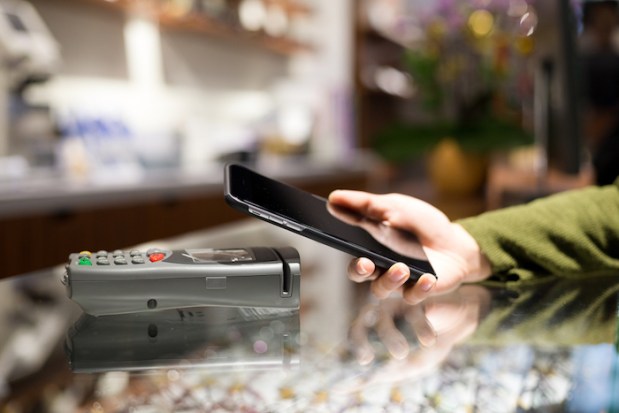The Costanza Edition: Robots As Checkouts And Retailers Urged To Share

Of all the famous “Seinfeld” episodes, few are as memorable as the time George decides to revamp his life by doing the exact opposite of everything his instincts urge him to. To his surprise, he gets a girlfriend, a promotion and a new house in quick succession. George isn’t George anymore, not really, but does that matter in the end?
And although a Costanza-inspired management style would never work anywhere – even with George — questioning the status quo is always healthy. It’s also a good theme for taking a look at the news of last week, namely MasterCard fueling a robot-inspired automated restaurant future, Wells Fargo mobilizing payments and a communal approach to preventing payments fraud.
MasterCard Automates With Pepper
The gambling man knows that of all the far-fetched predictions about automation in the retail workplace, the only sure-fire bet is that it sure is coming. The crest of the wave is surely still years away, but even now we’re starting to see a rising tide of groups willing to test out the waters, step by step.
One of those joint ventures is between MasterCard and Pizza Hut. The two announced a deal to integrate a robotic checkout assistant codenamed “Pepper” into stores across the Asia-Pacific region. John Sheldon, SVP of Innovation at MasterCard Labs, chatted with MPD CEO Karen Webster on how Pepper has been fine-tuned to gradually introduce both retailers and consumers alike to a future of shopping, buying and paying through automated in-store channels.
“What we really like about it is its ability to complete the transaction right there, in a very conversational way, as part of this broader rise of conversational commerce where you can interact in natural language with consumers,” Sheldon told Webster.
Pepper falls in line with other voice-activated technologies that are on the rise today, including the Amazon Echo and Google’s soon-to-be released equivalent device. A mobile, humanoid robot, Pepper wields a tablet in its hands and a processor-packed potential to read and respond to human commands and responses. Pepper prompts promotional add-ons when appropriate and only requires the scanning of a QR code to pair a customer’s phone via MasterCard’s MasterPass platform.
While this form of unattended retail might not be great for every casual dining experience, Sheldon did emphasize that it’s enough for a retailer that wants to dazzle a consumer with a new experience and at the same time gain some experience in the coming future of automation in retail.
“I don’t know if this is the way people are going to want to interact when they go out in restaurants or not, but I do think there’s going to be a rise in the use of unattended commerce, and Pepper could be a part of that,” Sheldon said.
Wells Fargo Goes Mobile
One needs to wonder how many mobile wallets it’s going to take before one catches fire and really plants a flag on the payments landscape. For now, all we know is that organizations still think that there’s safety in numbers, and Wells Fargo is now doing its part to pitch in.
Wells Fargo has announced the creation of a mobile wallet that will serve as a bridge between its 17 million mobile banking customers (and 70 million overall) and the growing network of mPOS terminals and ATMs.
“We know mobile is key to the future of payments, and we expect Wells Fargo Wallet to provide us a richer understanding of the quickly evolving landscape,” Jim Smith, head of virtual channels at Wells Fargo, said in a statement.
George Costanza might like this solution to his “fat wallet” problem, but how many Wells consumers do will depend on what features the wallet offers and where it can be used.
Pooling Resources, Sharing Data
Retailers and processors have their reasons for why they might not want to exercise an open-door policy when it comes to accessing their internal payments data. However, if anything is going to stop the increasingly frequent breaches and card fraud attempts, then merchants might want to do what Chris Uriarte, Chief Strategy and Payments Officer for Vesta Corporation, told PYMNTS. Sharing data is the first step toward true fraud prevention, he emphasized.
“Merchants may believe they already have enough data within their own databases to identify and prevent fraud, but without a broader diversity of consumer data across industries and channels, they really don’t have the full picture to take preventative measures, which can lead to less effective fraud prevention decisions,” Uriarte said.
Of course, that assumes that retailers are willing to expend the time and effort required to reach across the aisle and build bridges to the data pools of merchants in other industries and even — gasp — competitors. Merchant consortiums are an added cost, and they do require just as much security as the native sources they draw from, but it’s an increasing benefit in the expanding world of payments, Uriarte argued.
“The most successful fraud prevention systems layer a number of different strategies to ensure the best decisions are made in real-time,” he explained. “Consortium data enhances a merchant’s fraud prevention strategy by providing a broader view of customers, devices and payments across a variety of different channels.”
Sharing data might seem contradictory to most closed ecosystems, but so was George Costanza’s brief experiment with doing the opposite. But that’s just the thing with striking out in a different direction, whether it be opening up another mobile wallet in a sea of them or inching away from labor-based retail, if it works, it’s genius.
But if it doesn’t?
